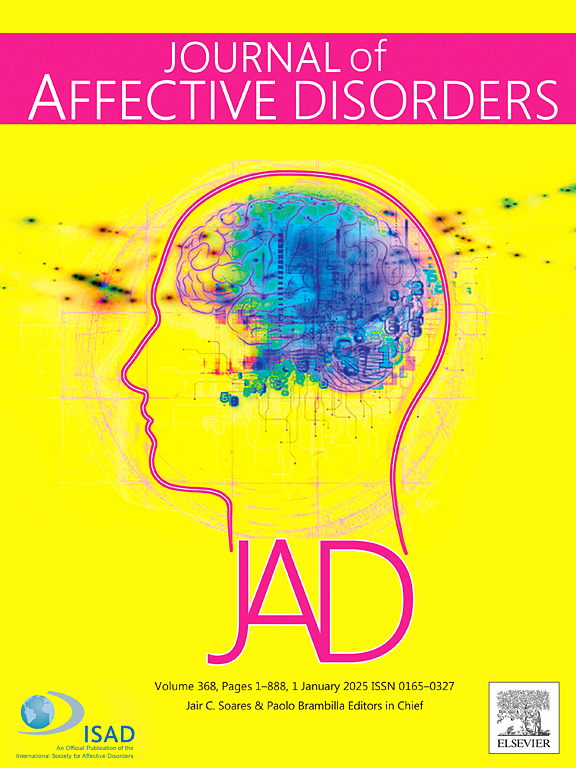Predictive evidence for the impact of personality styles on depression and functioning in two bipolar disorder cohorts
IF 4.9
2区 医学
Q1 CLINICAL NEUROLOGY
引用次数: 0
Abstract
Predictors for course of illness in bipolar disorder (BD) with replicable effect are difficult to identify. Potential predictors of outcomes for BD that could inform practice include personality traits, particularly Neuroticism. However, models typically fail to consider the joint effect of multiple personality traits. We examine whether personality trait combinations (styles) enhance our ability to prospectively predict symptoms and functioning across time in two independent longitudinal research cohorts. In a discovery sample of 489 and replication sample of 2072 individuals with BD, we assessed impact of personality styles using the NEO PI-R and NEO-FFI on depression and functioning up to 14 years. Using a model considering all ten possible personality style combinations, the number of risk-related personality styles (styles associated with poor outcomes) relative to number of protective-related personality styles (styles associated with better outcomes) showed that for every additional risk relative to protective style count, the incident rate of depression increased by 11.8–15.0 % and the incident rate for poor life functioning increased by 11.1 %. This similar pattern of increased risk styles being associated with significant increases in depression and functioning was replicated in the independent STEP-BD dataset, although with slightly lower incident rate (5 % and 2.9 %). Cross validation of performance from both cohorts showed similar predictive patterns (5–11.2 % increases). The ability to predict future depression and poor functioning from the combined effects of personality traits can be clinically useful for identifying individuals at risk for poorer outcomes. Personality styles should be evaluated when planning long-term care and developing interventions.
求助全文
约1分钟内获得全文
求助全文
来源期刊

Journal of affective disorders
医学-精神病学
CiteScore
10.90
自引率
6.10%
发文量
1319
审稿时长
9.3 weeks
期刊介绍:
The Journal of Affective Disorders publishes papers concerned with affective disorders in the widest sense: depression, mania, mood spectrum, emotions and personality, anxiety and stress. It is interdisciplinary and aims to bring together different approaches for a diverse readership. Top quality papers will be accepted dealing with any aspect of affective disorders, including neuroimaging, cognitive neurosciences, genetics, molecular biology, experimental and clinical neurosciences, pharmacology, neuroimmunoendocrinology, intervention and treatment trials.
 求助内容:
求助内容: 应助结果提醒方式:
应助结果提醒方式:


